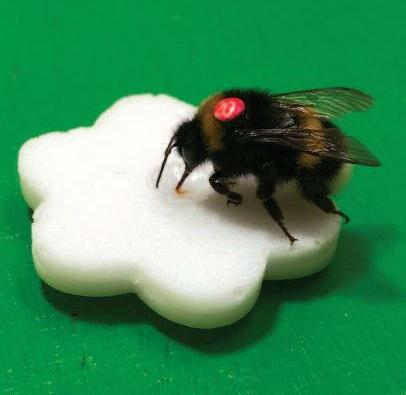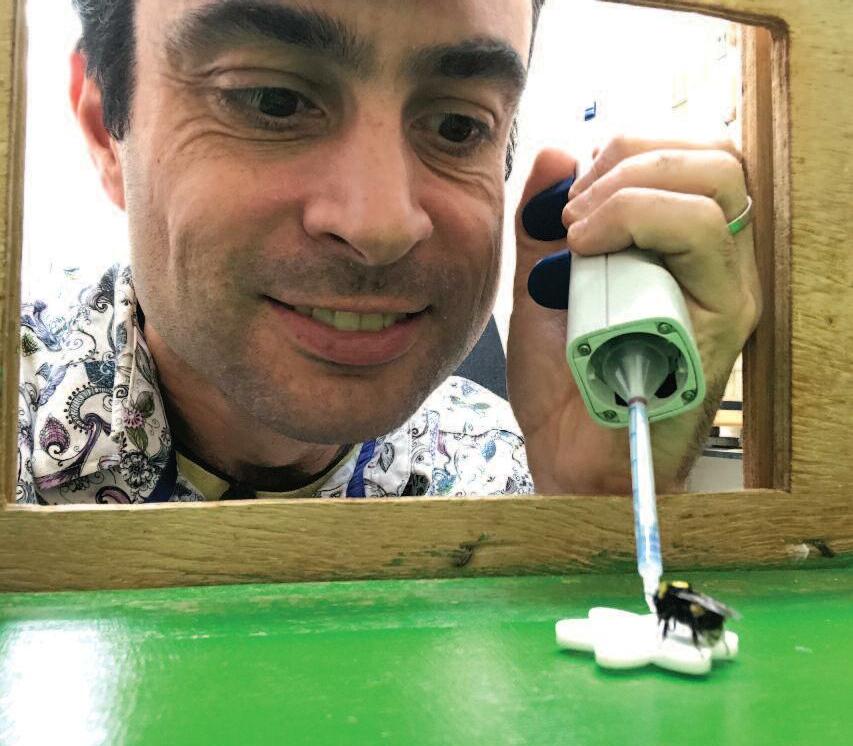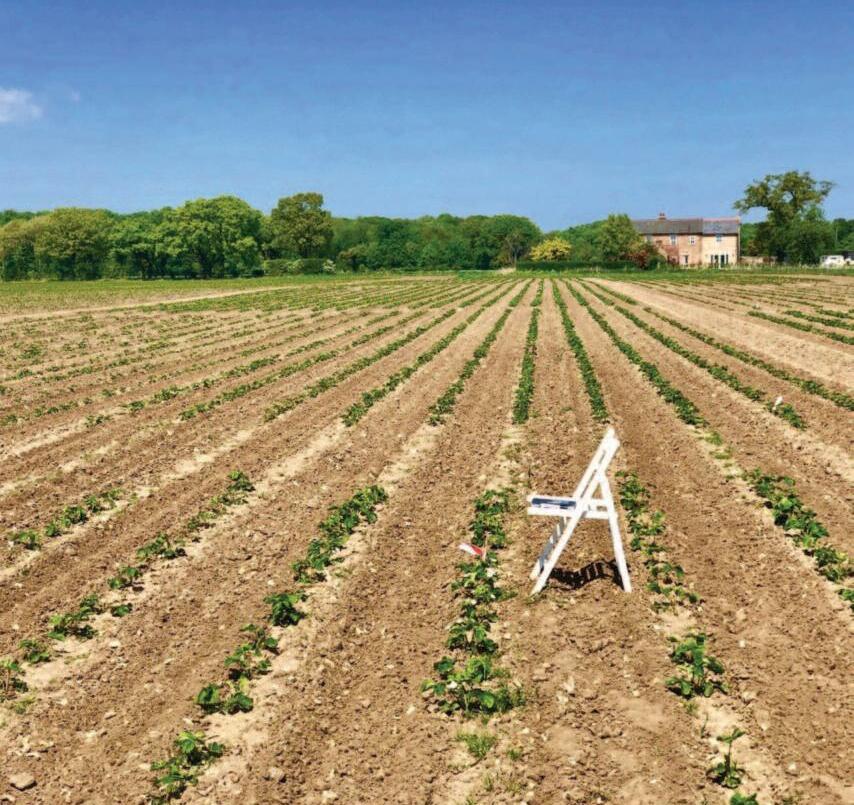
4 minute read
Hamish Symington
Improving pollinating plants to feed the world
Hamish Symington
Advertisement
A PhD student in Plant Sciences explains how research into insect pollination can improve food production
Six years ago, I gave up my job as a software developer, with the aim of returning to science and researching something that might leave the world a slightly better place for my daughter. Five years ’ experience in beekeeping had given me a deep interest in bees and flowers, and I was fortunate to gain a PhD place funded by Biotechnology and Biological Sciences Research Council (BBSRC) looking at improving pollination of crops in the Department of Plant Sciences.
A rising global population will need more food, and about a third of our crops by volume depend on insect pollination to some extent – but, around the world, insects are generally in decline. How do we reconcile that conflict? Alongside options such as reversing insect decline or breeding crop varieties which rely less on pollination, might it be possible to make it easier for insects to find flowers (meaning the same number of insects could visit more flowers per day), or to improve the nectar and pollen reward that those flowers offer (giving insects more energy to take back to their nests)? Selection for improvement in these traits could then be included in breeding programmes, without any need for GM techniques. I set out to tackle these approaches in strawberry plants, for which fruit quality is improved by insect pollination.
To see if I could make it easier for insects to find flowers, I focussed on petal shape, which is known to be involved in how insects perceive flowers. The approach I took was to characterise variation which already exists between different varieties, then use that information to test bee responses to the extremes of variation. A friendly strawberry farmer in Norfolk gave me access to a field where he grows 20 different varieties, and I spent several months photographing flowers and measuring them on a computer. This enabled me to make plastic flower models with which I could ask bees questions.
Testing how fast bees can find flowers involves training laboratory-reared bees (who ’ ve never seen a flower) to visit the plastic flowers and giving them a small sugar-water reward each time. With plastic flowers at known distances apart, I can then time individual bees ’ flights between them; if one flower shape is easier to find than another, then the bees will fly between them faster. Similarly, we can test if bees have an innate preference for flower shape by releasing a bee in a flight arena in which are flowers of both shapes, each containing a sugar-water reward, and watching which
of the two she visits; if we test enough bees, we can get a picture of bees ’ preferences in general. Disappointingly, changing flower shape gave no significant increase in speed, and bees displayed no preference for either shape –but at least we know that now, which we didn ’t before I did the work.
I’ ve also been looking at nectar. When bumblebees forage, they fly from the nest to a flower, drink, then keep flying between flowers and drinking until they ’ re full, then they return to the nest and offload the contents of their honey-stomach in a wax holding cell for their nestmates to drink. Bee drinking is relatively well studied, but nobody had ever timed offloading before, so I spent an enjoyable summer feeding bees sugar-water of different concentrations and timing them vomiting it back up in the nest. I showed that drinking and offloading are both affected by the viscosity of the sugar-water (which is affected by the concentration of sugar), and that offloading is faster than drinking – but that it is also much more strongly affected by viscosity. These measurements allow us to build a full model of energetic intake and expenditure during a foraging bout, fine-tuning the calculations of which nectar concentration maximises energy return to the nest (which, it turns out, heavily depends on the distance between nest and foraging patch).
Different plant species produce nectar with different sugar concentrations. But what sugar concentration do bumblebees prefer, and what sugar concentration maximises the rate of energy return to the nest? Previous work in our laboratory has shown that bees prefer more-sugary over less-sugary nectar up to about 55% sugar/water, but with relatively large quantities of sugar-water; I showed that this preference holds true when there was only one cubic millimetre of sugar-water per flower.


Low-tech fieldwork
This is important as it shows our laboratory results hold true in the real world, where some flowers produce very little nectar.
All through my PhD I’ ve struggled with the fact that my work is pretty low-tech: friends of mine work with incredibly expensive bits of equipment at temperatures a smidge above absolute zero, or use satellites to measure global CO2 concentrations, while I measure flowers and time bees with a stopwatch, one by one. But this approach has so much to offer: traditional breeding programmes have focussed on consumer-relevant traits such as yield, disease resistance and shelf life, with no regard for characteristics which are relevant to pollinators. Improvements such as those I’ ve described here can be combinatorial – we could improve search speed and nectar sugar concentration and nectar quantity and pollen quantity – and these approaches can go hand-in-hand with developing higher-yielding plants, as well. So, even though it’ s low-tech, I genuinely believe that techniques such as these might help improve food production in the years to come. And, if it turns out that that’ s not the case, at least I can look my daughter in the eye and tell her that I tried. n










